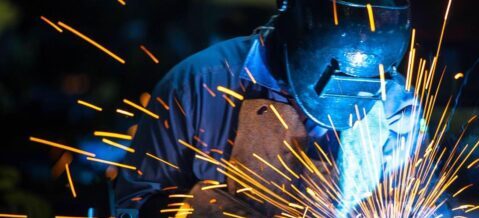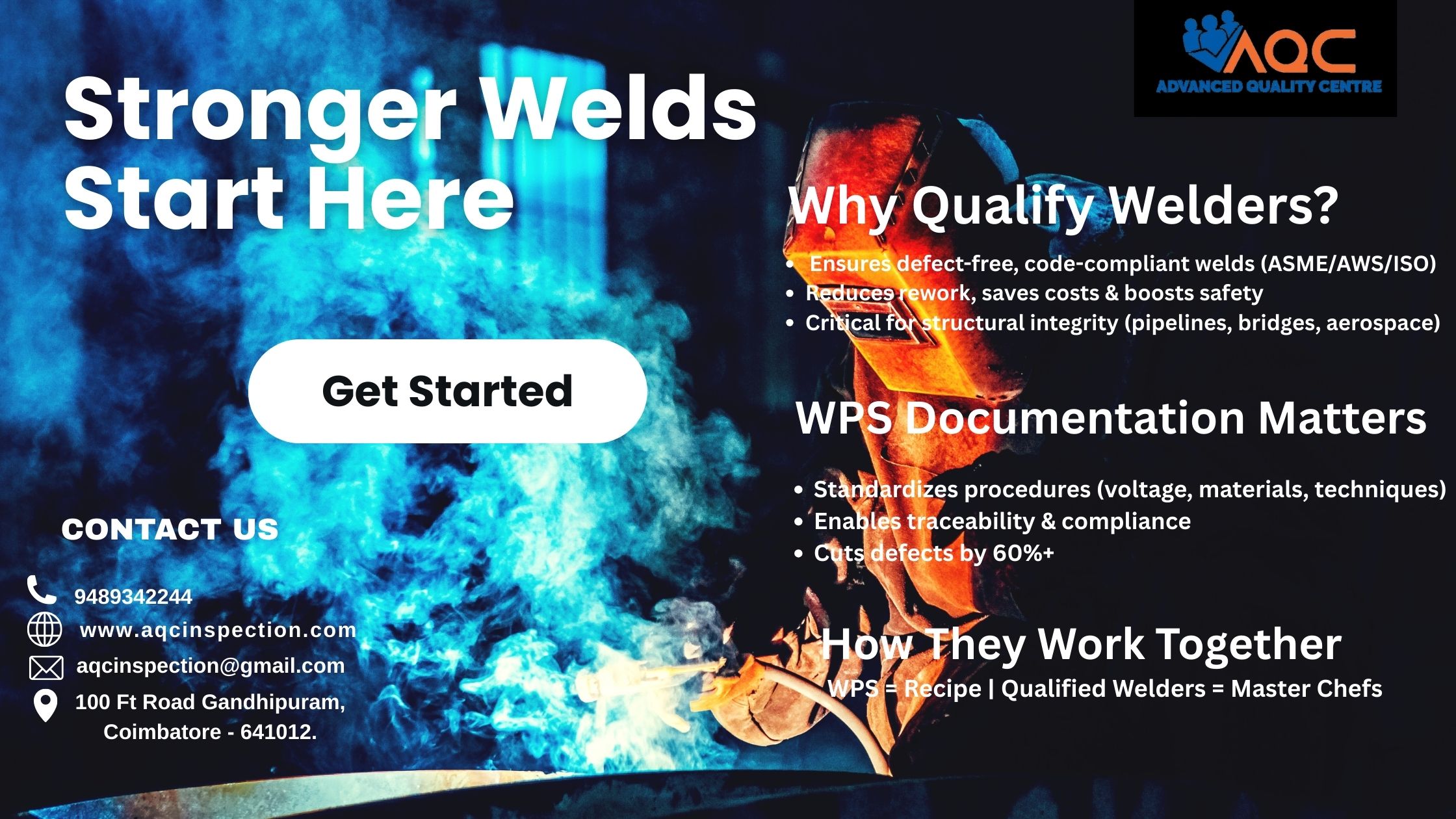Welding is a process of joining similar metal by process of heating and melting the base metals to its melting point. The melted base metals are contacted and allowed to cool for solidification and hence the weld joint is made. A welder who does this need a qualification called welder qualification and how this is done we would see in this blog.
Sometimes extra input of metal is given by means of filler metal (electrode in few cases ) .
Melting temperature in base metal is achieved by various methods based on with welding process is categorized.
- Arc welding– by creating an arc by flow of high current through a minute airgap between electrodes .
- Gas welding– by heat of flame on burning of fuel gases
- Electric Resistance – by heat created due to electric resistance created in base metal due to high current passing through it between two electrodes
- Friction Stir – Heat created due to rubbing of two metal parts
- Electron Beam – heat due to friction caused by hitting of electron beam over the metal
And lot more
The above welding process may be Manual , Semi- Automated or Automated Welding
- Person Performing Manual welding and Semi Automated Welding are called Welder
- Person Performing Automated Welding is called Welding Operator
Any Welder who is performing the process of joining metals should be qualified to perform that particular welding, so that there is a certificate to show that only the skilled person is involved in the process.
The reason for the certification is to create sound welding by reducing the possibility of weld defects. Only a skilled welder can produce a weld joint with less defects.
What are welding defects ?
The weld joint are tend to be formed with various possible discontinuities such as Undercut, Underfill, Lack of Fusion, Excess Penetration, Improper Overbead, Root Concavity/ Suckback, Slag Inclusons, Burnthrough, Porosity, Craters, Piping, Star Cracks, HAZ Cracks, Cracks, Arc Strike, Spatters, Overlap and much more.
Industrial Standards of International bodies has procedures to qualify a welder , few of international bodies are given below
- International Standards Organization (ISO),
- American Society of Mechanical Engineers (ASME),
- American Welding Society (AWS),
- British Standards of European Nation ( BS EN),
- Standards of Australia and New Zealand (AS/NZS),
- Canadian Standards Association ( CSA ) and lot more.
The Reference Standard for Welder Qualification based on the above mentioned International standards are given below :
Welder Qualification Standards:
- ASME Section IX – welder qualification for Boilers, Pressure Vessels and Pipelines
- AWS D1.1 – For Structural Steel Welding
- AWS D1.3- For Sheet metal Welding (up to 5mm thickness )
- AWS D1.6 – For Stainless Steel Structures welding
- ISO 9606 – International Standard for Welder Qualification
- BS EN 287 – British Standard for Welder Qualification (replaced by ISO 9606-1 in 2015)
- AS/NZS 2980 – Australian Structural welding standard,
- CSA W47.1 and W59 – Canadian Welding Standards for Welder Qualification
How to Qualify Welders ?
Generally welders are qualified at the company’s facility; very essentially the company should possess a welding Procedure Specification WPS for qualification of Welder
The WPS is a company’s important document which states how a welding should be made.WPS consists of several essential data such as :- Base metal that can be welded, electrodes that can be used, Pre-heating requirements, Gases to be used, Current to be given, welding speed, Post weld heat Treatment requirements and lot more…
Each company should have their own welding Procedure Specifications WPS as their minimum requirement. The above mentioned parameters depends upon the grade of base metal they use, their environmental condition, their power capacity, their grade of electrodes and also their supplementary requirements.
High quality welding standards will attract more international clients.
Contact us to help you making a perfect Welding Procedure Specification at very low charges, or visit us for more guidance https://aqcinspection.com/non-destructive-testing/
Can view our blogs about welding procedure specification (wps), and welder procedure qualification record (wpqr) on https://advancedqualitycentre.blogspot.com/




